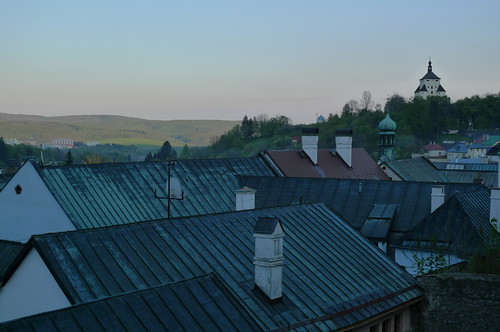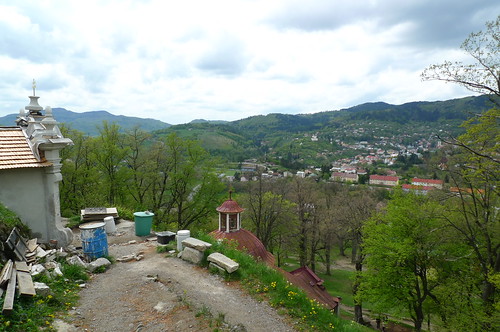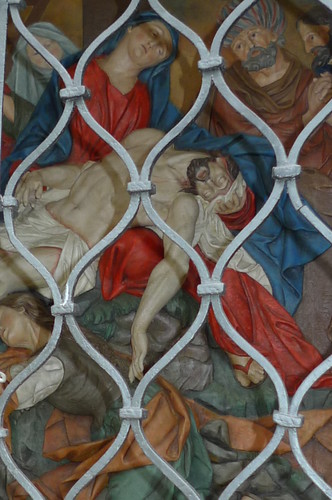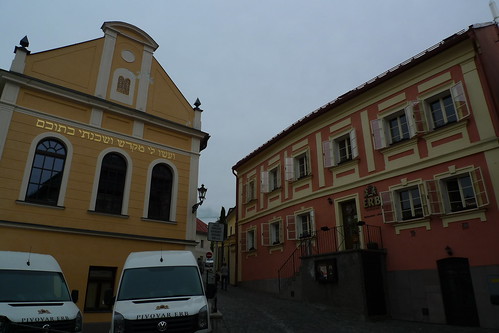When the town was prosperous, many impressive buildings were constructed: castles, a mining academy, churches, synagogue, plague column, and hilltop Chapel of Calvary like no other we've seen. Most have been restored and some also re-purposed. There are also many cemeteries, new amphitheater and an exhibition mine.
We arrived by train from Bratisalva, stayed two nights and left by bus to the High Tatras.
The train from Bratislava to Zloven made just a few stops, one of which was at Surany.

From the train, we spotted more than a few Roma villages like this one.

Banská Štiavnica is very photogenic being a mining town in the hills.



Town Square with Plague Column.

The Botanic Gardens building.

A villa, with hints of Art Nouveau style, waiting to be restored.

Wikipedia says "Calvary Banská Štiavnica is the most important Baroque calvary in Slovakia and in the whole former Kingdom of Hungary – probably even in the whole of Europe." We've seen many Stations of the Cross with Chapels in our travels. This one rates a 10 while among all the others none is higher than a 5. It's been under renovation/restoration for 20 years and more work remains. It's a gem.


The scene inside one of the small chapels; restored.

And another - The Last Supper.

Chapels that have not yet been restored have a photo.




The Calvary/Kalvaria Chapel at the top is currently under renovation but we got a glimpse through the scaffolding of the bottom of the Crucifixion painting.


Some views from the top of the hill.






Around the Old Town.


The old Synagogue is now part of the ERB Brewery.

The New Castle.

One of the old City Gates.

The Old Castle (center with tower).

Looking past the Old Castle Tower to Calvary.


No comments:
Post a Comment